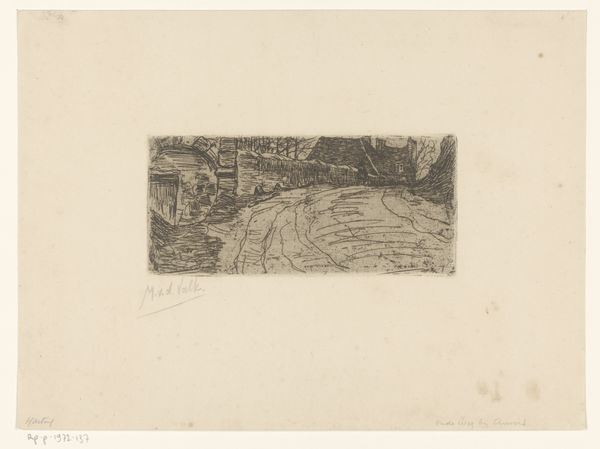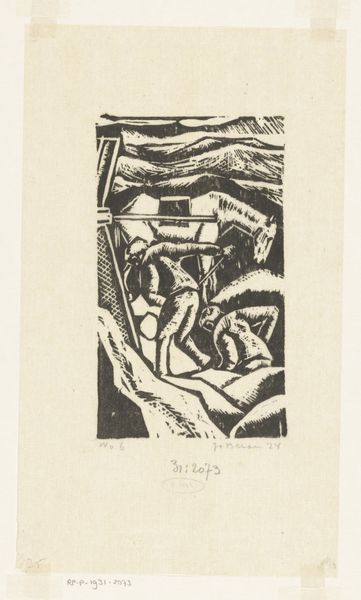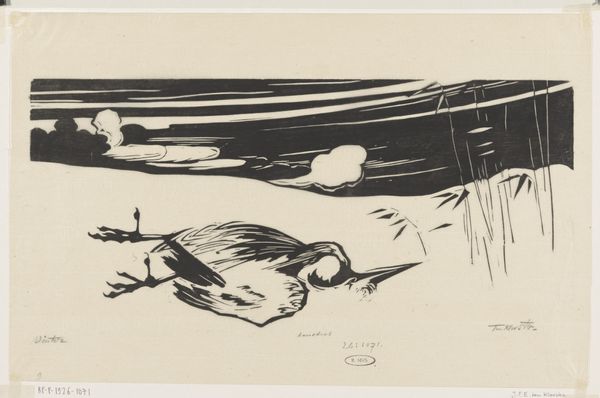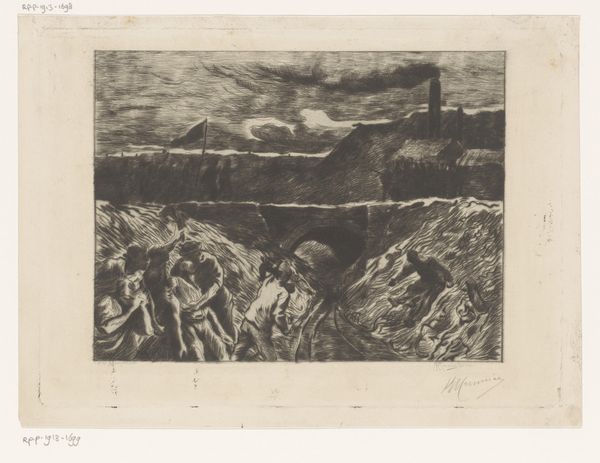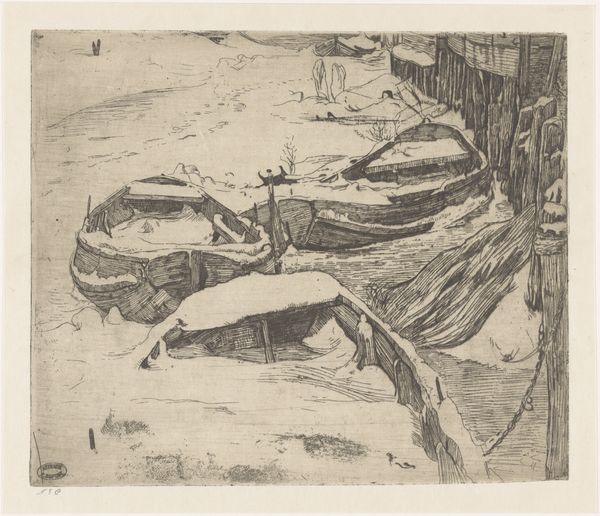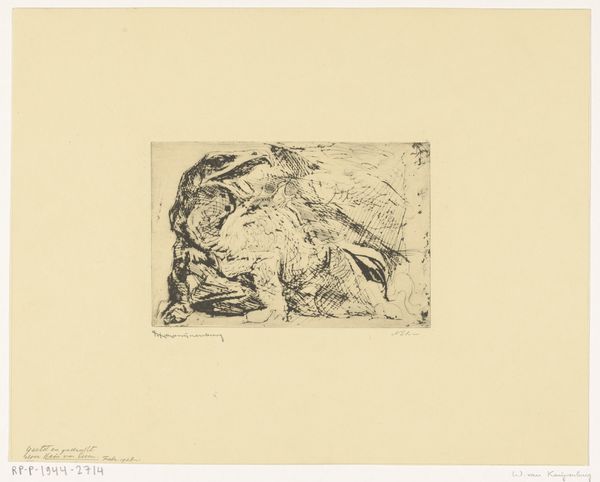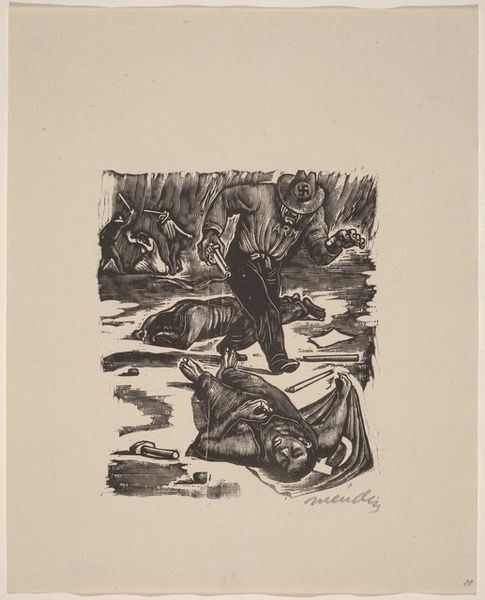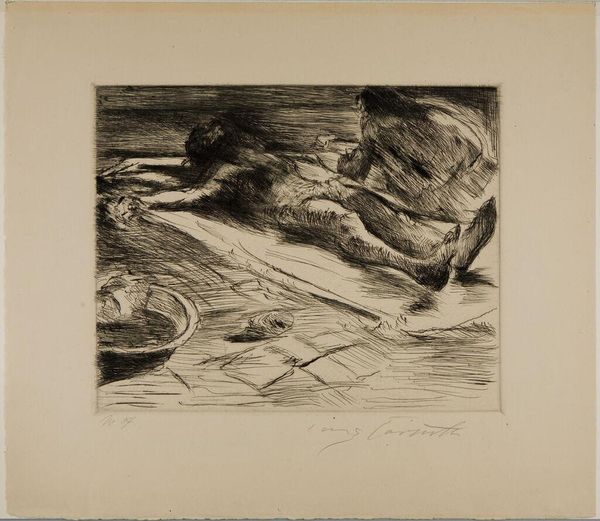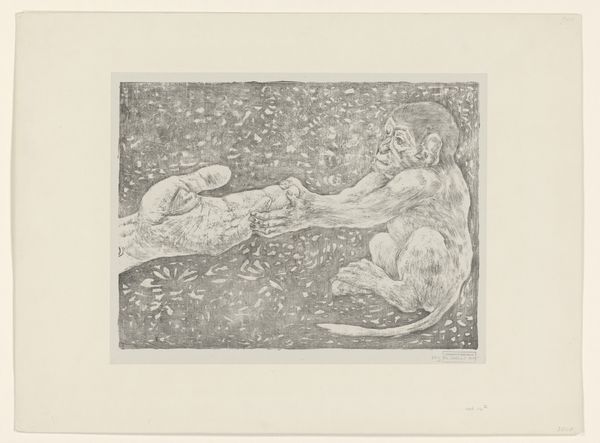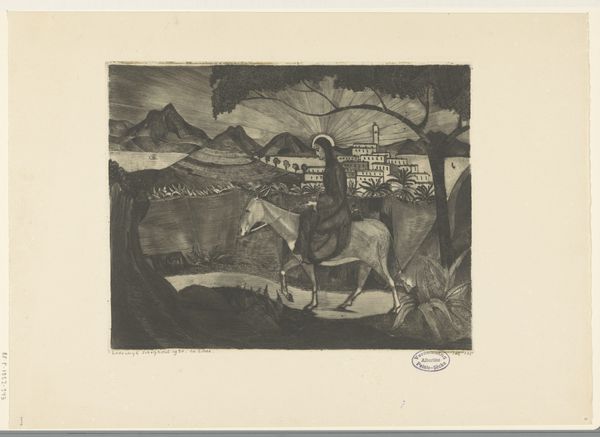
print, linocut, woodcut
#
ink paper printed
# print
#
linocut
#
landscape
#
personal sketchbook
#
linocut print
#
geometric
#
woodcut
#
sketchbook drawing
Dimensions: height 154 mm, width 216 mm
Copyright: Rijks Museum: Open Domain
Curator: What strikes me immediately is the chaotic energy of this composition; all these logs scattered about, the rough textures rendered in such high contrast. Editor: Indeed, the linocut titled "Boomstammen bij de kiel van een boot in aanbouw," which translates to "Logs at the keel of a boat under construction," by Duilio Cambellotti, showcases precisely that raw energy. The use of the linocut technique speaks volumes about its potential for broad accessibility and dissemination. Curator: Linocut, right. The choice of this relatively inexpensive medium and printing technique would suggest a conscious decision to make the work accessible to a wider audience beyond the traditional art market. There’s a clear relationship between material choice and the potential social impact of the artwork. Editor: Absolutely, and it begs the question of who this artist aimed to reach. It is very tactile; I can almost feel the resistance of the lino as Cambellotti carved away at it to create these strong, angular shapes. The process itself becomes integral to the message. Did this choice perhaps make the art more popular among ordinary people at the time? Curator: One might presume that this aesthetic of the 'everyman' was embraced in an effort to build the foundations for wider visibility among social spheres. Think of its placement, perhaps reproduced in publications, fostering a connection to a broader audience interested in craftsmanship, boat building, and scenes of everyday labour, especially those unable to afford traditionally sanctioned art forms. Editor: Speaking of labor, observe the work site atmosphere suggested by these raw materials. Logs, roughly hewn and stacked seemingly at random, suggesting both human endeavor and nature’s raw power being harnessed for technological advancement. Curator: From a historical perspective, we also see themes tied to national identity at the beginning of the 20th century through celebrating workers, the process of industrial advancement, the working class's cultural heritage, and Italy's relationship to the sea. It encapsulates that dynamic tension. Editor: It’s remarkable how much complexity and potential political discourse can be captured in such a seemingly simple, black-and-white print. I hadn't expected such an economic image of material culture and labour. Curator: Nor did I imagine how much context one could garner, contemplating the artist’s conscious choice of this relatively simple and democratic artistic approach, versus others considered part of the 'fine art' discourse at the time.
Comments
No comments
Be the first to comment and join the conversation on the ultimate creative platform.

